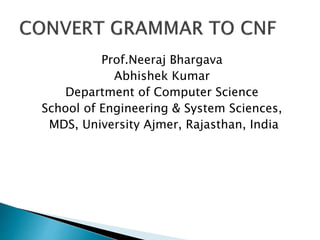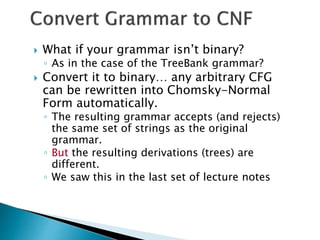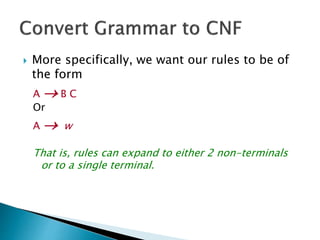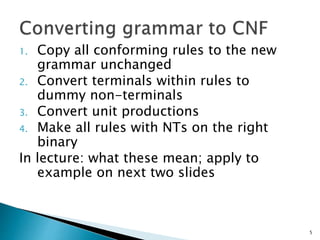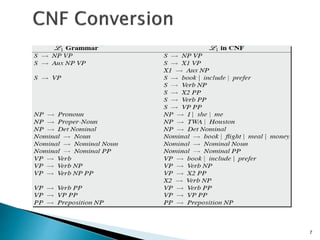Convert grammar to cnf
- 1. Prof.Neeraj Bhargava Abhishek Kumar Department of Computer Science School of Engineering & System Sciences, MDS, University Ajmer, Rajasthan, India
- 2. ï― What if your grammar isnât binary? âĶ As in the case of the TreeBank grammar? ï― Convert it to binaryâĶ any arbitrary CFG can be rewritten into Chomsky-Normal Form automatically. âĶ The resulting grammar accepts (and rejects) the same set of strings as the original grammar. âĶ But the resulting derivations (trees) are different. âĶ We saw this in the last set of lecture notes
- 3. ï― More specifically, we want our rules to be of the form A ïŪ B C Or A ïŪ w That is, rules can expand to either 2 non-terminals or to a single terminal.
- 4. ï― Introduce new intermediate non-terminals into the grammar that distribute rules with length > 2 over several rules. âĶ SoâĶ S ïŪ A B C turns into S ïŪ X C and X ïŪ A B Where X is a symbol that doesnât occur anywhere else in the the grammar. 4
- 5. 1. Copy all conforming rules to the new grammar unchanged 2. Convert terminals within rules to dummy non-terminals 3. Convert unit productions 4. Make all rules with NTs on the right binary In lecture: what these mean; apply to example on next two slides 5
- 7. 7
